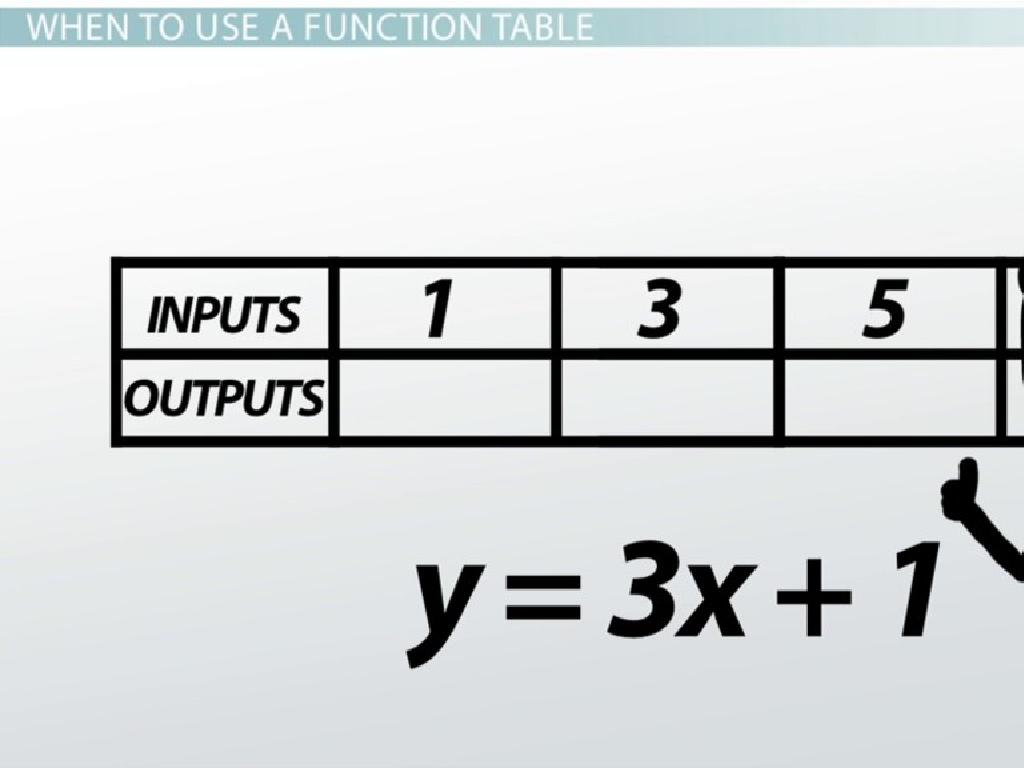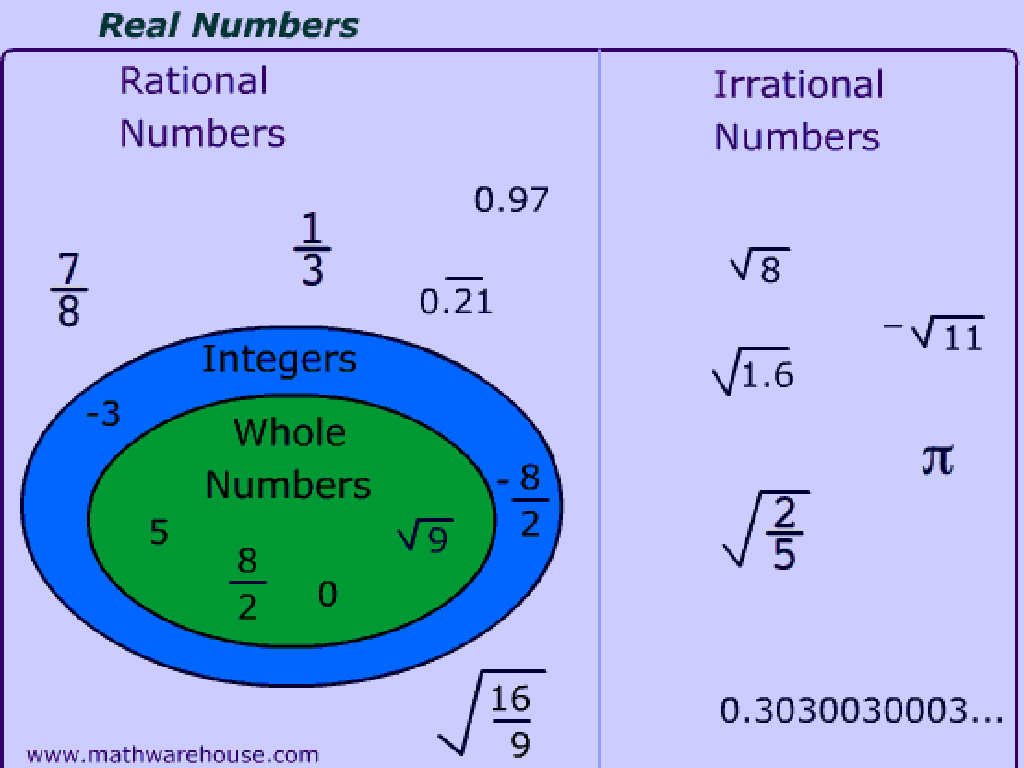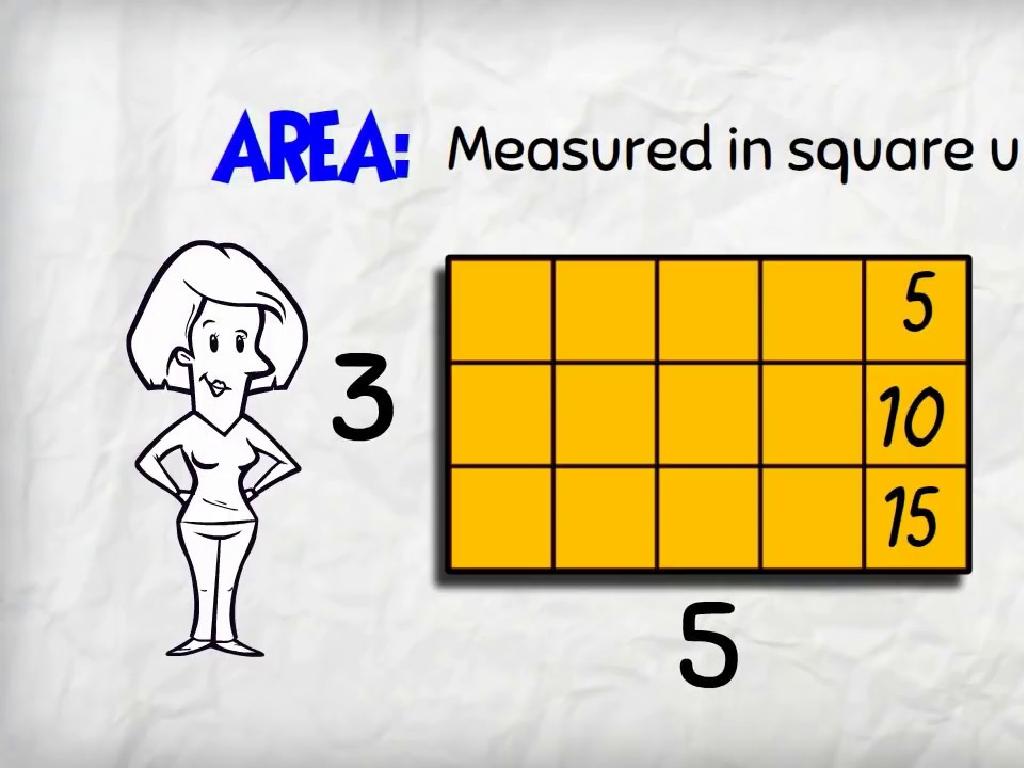Choose The Uppercase Letter That Matches: Review
Subject: Language arts
Grade: First grade
Topic: Lowercase And Uppercase Letters
Please LOG IN to download the presentation. Access is available to registered users only.
View More Content
Welcome to Letter Land!
– Let’s play a matching game!
– Learn big and small letters
– Uppercase are big letters, lowercase are small
– Match uppercase with lowercase
– Find the big letter for each small letter
– Share letters you know
|
This slide introduces a fun and interactive matching game to help first graders recognize and match uppercase and lowercase letters. Begin by explaining the difference between big (uppercase) and small (lowercase) letters. Engage the students by asking them to volunteer examples of letters they already know. For the activity, provide students with a set of cards with both uppercase and lowercase letters and ask them to find the pairs. Alternatively, use a whiteboard to draw letters and have students match them. Encourage participation and praise correct matches to reinforce learning. This activity will help students with letter recognition, an essential skill in reading and writing.
Matching Uppercase Letters
– What are uppercase letters?
Big letters like A, B, C, instead of a, b, c.
– When do we use uppercase letters?
At the start of sentences and for names like Alice or Bob.
– Sing the Uppercase Alphabet Song
– Practice matching letters
We’ll match lowercase to uppercase letters.
|
This slide introduces first graders to the concept of uppercase letters, emphasizing their size and usage. Begin by explaining that uppercase letters are the ‘big’ versions of letters and are used in specific cases. Highlight the importance of using uppercase letters at the beginning of sentences and for proper nouns, such as names of people and places. Engage the class by singing the Uppercase Alphabet Song to familiarize them with the appearance and order of uppercase letters. Conclude with a matching activity where students practice identifying the uppercase letter that corresponds to a given lowercase letter. This interactive approach reinforces their understanding and recognition of uppercase letters.
Matching Lowercase to Uppercase Letters
– What are lowercase letters?
– Small letters in the alphabet, like a, b, c
– When do we use lowercase?
– Used in most of our writing except for names and start of sentences
– Sing the Lowercase Alphabet Song
– Practice matching letters
– Find the big letter that looks like each small letter
|
This slide introduces the concept of lowercase letters to first graders, emphasizing their use in everyday writing. Begin by explaining that lowercase letters are the smaller forms of the alphabet that we use most of the time. Highlight situations where lowercase letters are used, such as in the middle of sentences and for most words that are not names. Engage the class by singing the Lowercase Alphabet Song to familiarize them with the sounds and shapes of each lowercase letter. After the song, transition into an activity where students practice matching lowercase letters to their uppercase counterparts. This can be done with flashcards, worksheets, or interactive games. Encourage participation and assist students who may struggle with identifying certain letter pairs.
Matching Game: Big and Small Letters
– Every big letter has a small match
– Observe the letters on the screen
– Find the matching small letter
– Draw a line to match letters
– Example: Match big letter ‘A’ with small ‘a’
|
This slide introduces a matching game to help first graders recognize the relationship between uppercase and lowercase letters. Display pairs of mixed uppercase and lowercase letters on the screen. Encourage the students to observe and find the matching pairs. Invite them to come up to the screen or board and draw lines connecting the uppercase letters to their corresponding lowercase counterparts. For example, connect ‘A’ with ‘a’. This activity will help reinforce their understanding of the alphabet and the concept of big and small letters. It’s a fun and interactive way to review letter recognition. Prepare to assist students who may need help and offer praise to boost their confidence.
Practice Time: Matching Letters!
– It’s your turn to match letters
– Receive your matching worksheet
– A worksheet with uppercase and lowercase letters
– Connect big letters to small letters
– Draw a line from A to a, B to b, C to c, etc.
– Have fun finding letter pairs
|
This activity is designed to help students practice and reinforce their understanding of the relationship between uppercase and lowercase letters. Distribute the worksheets with pairs of letters in different cases scattered across the page. Instruct the students to draw lines connecting each uppercase letter to its corresponding lowercase letter. This will help them visually and physically make the connection between the two forms of each letter. Offer assistance as needed and encourage students to say the letter names aloud as they make each match to further embed the knowledge. After the activity, review the matches as a class to ensure understanding and correct any misconceptions.
Let’s Review Matching Letters!
– Find the big letter B
– Match big B to small b
– Look for the little b that looks like the big B
– Review all letter matches
– We’ll match uppercase and lowercase letters as a class
– Celebrate our matching skills
– Praise for learning and matching letters correctly
|
This slide is designed to reinforce the concept of uppercase and lowercase letter matching. Start by asking students to identify the uppercase letter B on a displayed alphabet chart. Then, prompt them to find the corresponding lowercase letter b. Afterward, review all the letter matches together, ensuring that each student is engaged and participating. Celebrate their success in matching the letters, which will boost their confidence and reinforce their learning. Provide positive feedback and encourage them to help each other if someone is struggling. This activity not only reviews letter recognition but also promotes peer learning and support.
Class Activity: Letter Hunt
– We’re going on a letter hunt
– Find objects starting with big letters
– Look for objects like ‘A’ for ‘Apple’
– Match big letters to small letters
– Use your worksheet for matching
– Have fun discovering letters!
|
This activity is designed to help students recognize and match uppercase letters with their lowercase counterparts. Hand out cards with uppercase letters and worksheets with lowercase letters to each student. Encourage them to search the classroom for objects that start with the uppercase letter on their card, then draw a line to the matching lowercase letter on their worksheet. This will reinforce their understanding of the relationship between uppercase and lowercase letters in a fun, interactive way. Possible variations of the activity could include having students find items in a magazine that start with their assigned letter, or even bringing items from home that start with their letter for show and tell.
Celebrating Uppercase & Lowercase Letters
– Great job learning big & small letters!
– Recognize letters in the world around you
– See if you can find uppercase and lowercase letters on signs, books, and at home.
– Time for a well-deserved clap!
– Keep practicing your ABCs
– Practice makes perfect! Try writing your ABCs at home.
|
This slide is a celebration of the students’ achievements in learning and distinguishing between uppercase and lowercase letters. It’s meant to provide positive reinforcement and encourage them to continue observing and practicing their letters in everyday life. The teacher should lead the class in a round of applause, creating a fun and supportive environment. After the applause, the teacher can suggest looking for letters in the environment or practicing writing at home to reinforce the lesson.





